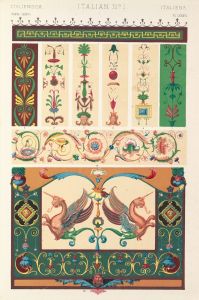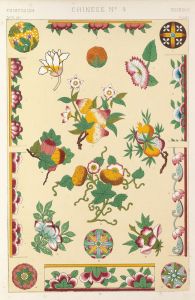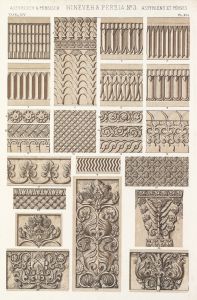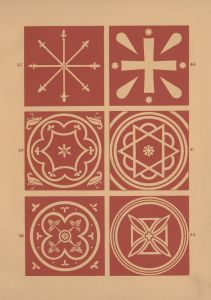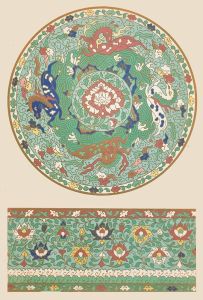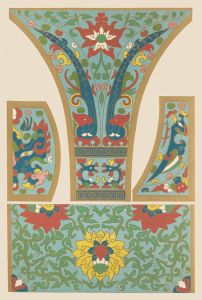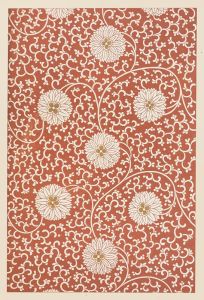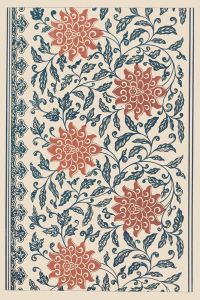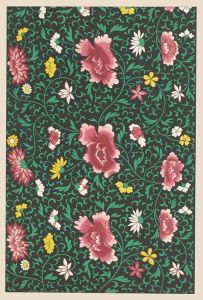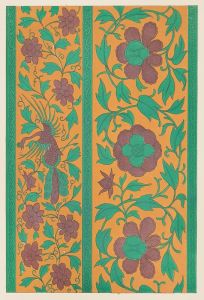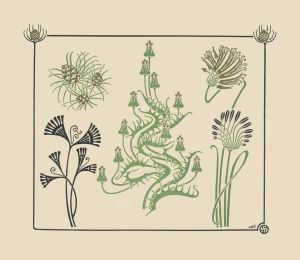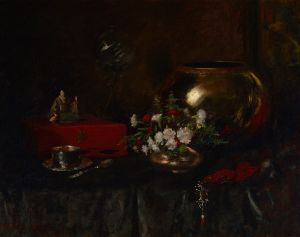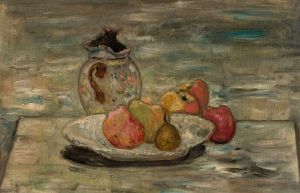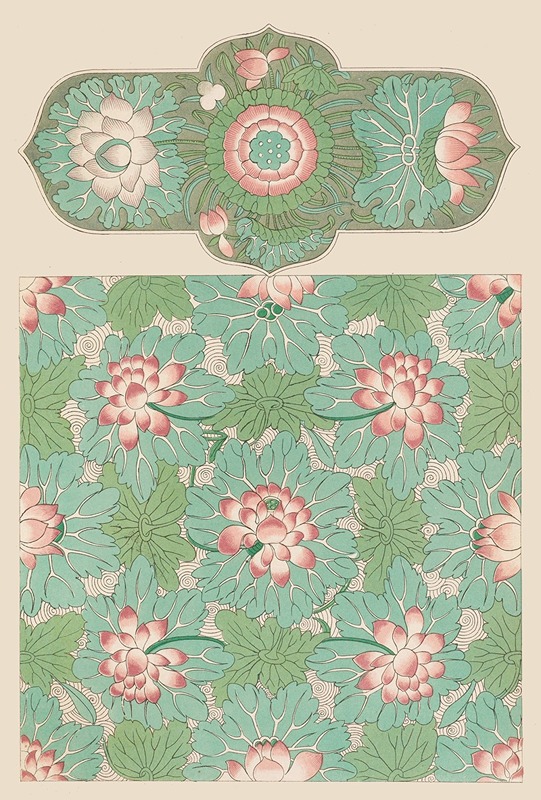
Examples of Chinese ornament, Pl.81
A hand-painted replica of Owen Jones’s masterpiece Examples of Chinese ornament, Pl.81, meticulously crafted by professional artists to capture the true essence of the original. Each piece is created with museum-quality canvas and rare mineral pigments, carefully painted by experienced artists with delicate brushstrokes and rich, layered colors to perfectly recreate the texture of the original artwork. Unlike machine-printed reproductions, this hand-painted version brings the painting to life, infused with the artist’s emotions and skill in every stroke. Whether for personal collection or home decoration, it instantly elevates the artistic atmosphere of any space.
"Examples of Chinese Ornament, Pl.81" is a plate from the influential design book "The Grammar of Ornament," authored by Owen Jones and first published in 1856. Owen Jones was a British architect and designer, renowned for his work in color theory and ornamental design. His book aimed to provide a comprehensive collection of decorative arts from various cultures, serving as a source of inspiration and education for designers and architects of the time.
"The Grammar of Ornament" is divided into several sections, each focusing on the ornamental styles of different cultures, including Egyptian, Persian, Greek, Roman, and Chinese, among others. Plate 81 specifically showcases Chinese ornamentation, reflecting the rich artistic traditions and aesthetic principles of China.
Chinese ornamentation is characterized by its intricate patterns, symbolic motifs, and harmonious use of color. These designs often draw inspiration from nature, mythology, and philosophy, incorporating elements such as dragons, phoenixes, clouds, and floral patterns. The use of symmetry and balance is a hallmark of Chinese design, reflecting the cultural emphasis on harmony and order.
In Plate 81, Jones captures the essence of Chinese decorative art through detailed illustrations that highlight the complexity and beauty of these designs. The plate likely includes examples of motifs commonly found in Chinese art, such as the lotus flower, which symbolizes purity and enlightenment, and the dragon, a symbol of power and good fortune. The use of vibrant colors, such as red, gold, and blue, is typical in Chinese ornamentation, each color carrying its own cultural significance.
Jones's work was groundbreaking in its approach to documenting and analyzing design elements from around the world. By including Chinese ornamentation in his book, he not only acknowledged the artistic achievements of Chinese culture but also encouraged the appreciation and incorporation of these elements into Western design practices. His work played a crucial role in the 19th-century design reform movement, which sought to elevate the standards of design by looking to historical and global sources for inspiration.
The influence of "The Grammar of Ornament" extended beyond its initial publication, impacting the fields of architecture, interior design, and the decorative arts for generations. It provided a visual and theoretical framework that designers could draw upon, fostering a greater understanding and appreciation of diverse artistic traditions.
In summary, "Examples of Chinese Ornament, Pl.81" by Owen Jones is a testament to the intricate and symbolic nature of Chinese decorative arts. Through his detailed illustrations and analysis, Jones contributed to a broader understanding and appreciation of global design traditions, highlighting the interconnectedness of artistic expression across cultures. His work remains a valuable resource for those interested in the history and theory of design.





